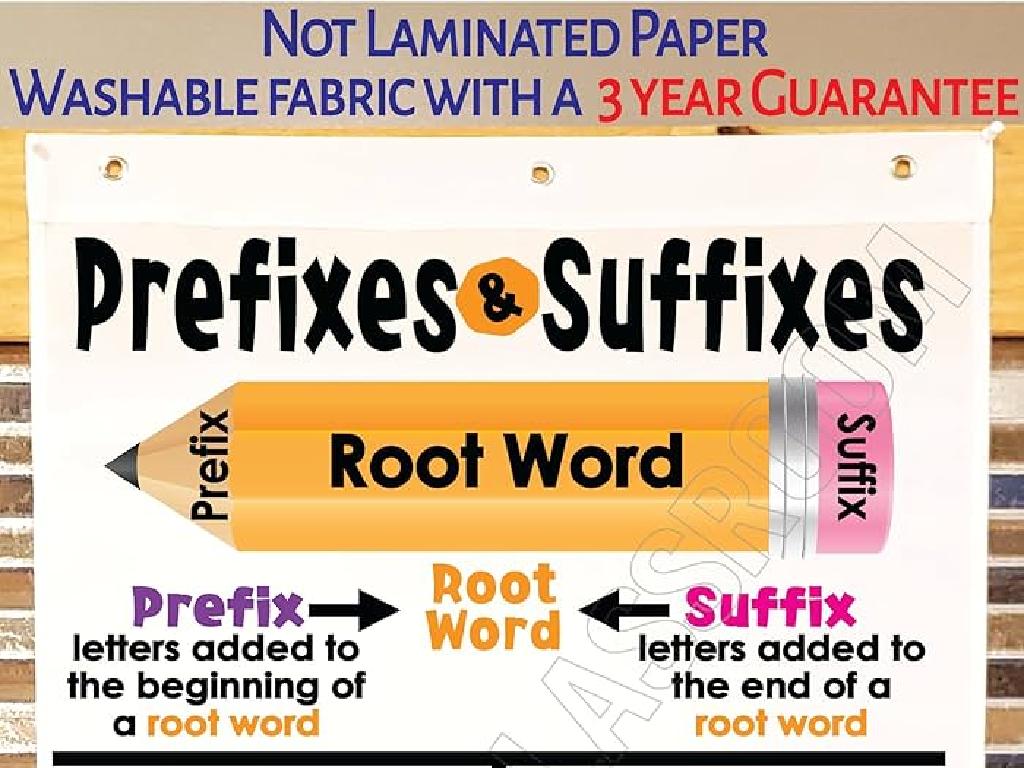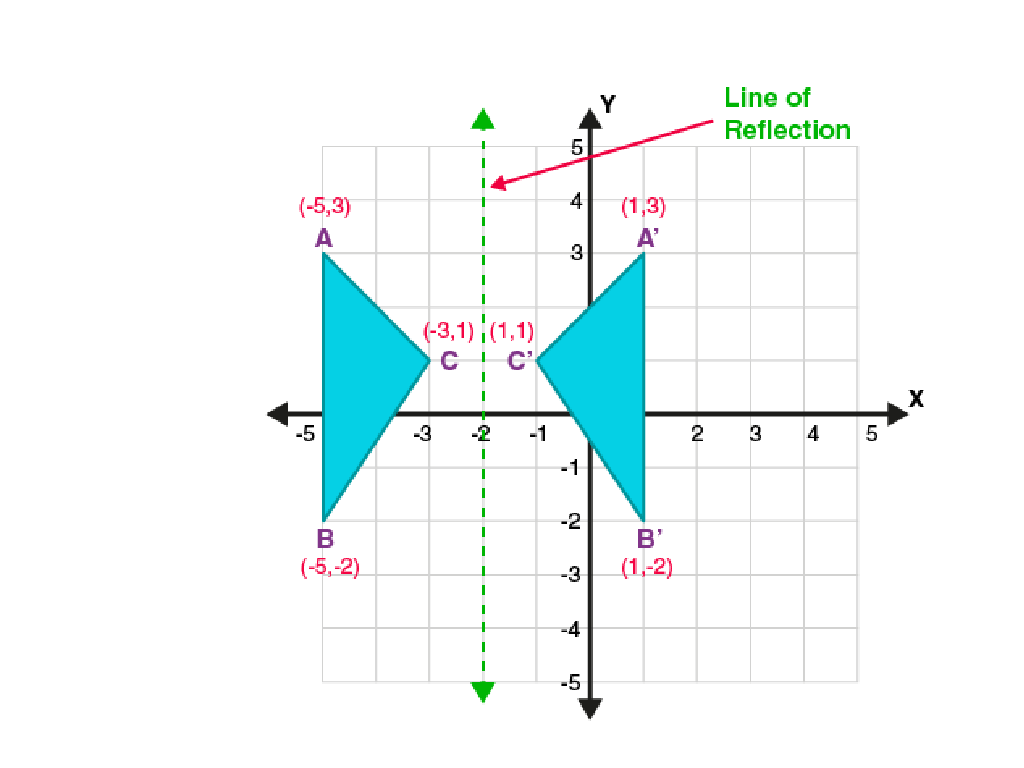Use Singular And Plural Nouns
Subject: Language arts
Grade: Third grade
Topic: Nouns
Please LOG IN to download the presentation. Access is available to registered users only.
View More Content
Welcome to Nouns!
– Greetings and Introduction to Nouns
– Exploring What Nouns Are
– A noun is a person, place, thing, or idea
– Singular Nouns: One of a Kind
– Singular nouns mean just one: cat, dog, book
– Plural Nouns: More than One
– Plural nouns mean more than one: cats, dogs, books
|
This slide is designed to introduce third-grade students to the concept of nouns in a fun and engaging way. Start with a warm greeting and explain that nouns are the names of people, places, things, or ideas. Then, focus on singular nouns, which refer to one single item or entity. Use relatable examples like ‘one cat’ or ‘one book’ to illustrate the point. Next, introduce plural nouns by showing how they represent more than one item, such as ‘many cats’ or ‘a stack of books.’ Encourage students to think of their own examples and understand the difference between singular and plural nouns. This foundational knowledge will help them in constructing sentences and understanding subject-verb agreement.
Exploring Nouns: Singular and Plural
– What is a noun?
– A noun is a word that identifies a person, place, thing, or idea
– Nouns name people, places, things
– For instance, ‘doctor’, ‘park’, ‘ball’, or ‘joy’
– Examples: ‘teacher’, ‘school’
– ‘Teacher’ refers to a person who teaches
– ‘Pencil’ and ‘happiness’ as nouns
– ‘School’ is a place where we learn, ‘pencil’ is an object for writing, and ‘happiness’ is a feeling
|
This slide introduces the concept of nouns to third-grade students. Begin by explaining that a noun is a word that names something. Use relatable examples such as ‘teacher’ for people, ‘school’ for places, ‘pencil’ for things, and ‘happiness’ for ideas. Encourage students to think of their own examples of nouns. Discuss how nouns can be singular, referring to one, or plural, referring to more than one. Provide visual aids or props if possible to help students associate words with their meanings. The goal is to ensure students can identify and use nouns in both singular and plural forms in their writing and speech.
Exploring Singular Nouns
– Singular nouns represent one
– Examples: ‘cat’, ‘house’, ‘boat’
– One cat, one house, one boat
– Classroom singular noun hunt
– Find items in class that are singular
– Share findings with the class
– Discuss the items you found
|
This slide introduces the concept of singular nouns to third-grade students. Begin by explaining that singular nouns are words that name just one person, place, thing, or idea. Provide clear examples such as ‘cat’, ‘house’, and ‘boat’ to illustrate the point. For the activity, students will look around the classroom to identify objects that are singular nouns. Encourage them to think about each item and determine if it is one single unit. After the hunt, ask students to share their findings with the class, reinforcing their understanding of singular nouns. This activity not only makes learning interactive but also helps students apply the concept of singular nouns to their immediate environment.
Understanding Plural Nouns
– Plural nouns represent multiples
– When we talk about more than one thing
– Making nouns plural: add ‘s’ or ‘es’
– If a noun ends in ‘s’, ‘x’, ‘z’, ‘ch’, or ‘sh’, add ‘es’
– Examples: ‘cats’, ‘houses’, ‘boats’
– ‘cat’ becomes ‘cats’, ‘house’ becomes ‘houses’
– Practice with different nouns
|
This slide introduces the concept of plural nouns to third-grade students. Begin by explaining that plural nouns are used when there is more than one of something. Most nouns become plural by simply adding an ‘s’ at the end, but for words ending in ‘s’, ‘x’, ‘z’, ‘ch’, or ‘sh’, we add ‘es’. Provide clear examples like ‘cat’ turning into ‘cats’ and ‘house’ into ‘houses’. Engage the class by asking them to convert singular nouns to plural and vice versa. Encourage them to think of their own examples and share them with the class. This practice will help solidify their understanding of singular and plural noun forms.
Making Nouns Plural
– Rules for adding ‘s’ or ‘es’
– Add ‘s’ to most nouns, ‘es’ to nouns ending in s, x, z, ch, or sh
– Special plural cases
– Words like ‘child’ become ‘children’, ‘mouse’ becomes ‘mice’
– Practice changing nouns
– We’ll work together to make singular nouns plural
– Group activity
|
This slide introduces the basic rules for converting singular nouns to their plural forms, which is a key concept in grammar for third graders. Start by explaining the general rule of adding ‘s’ to make most nouns plural. Then, discuss the rule for adding ‘es’ for nouns ending in s, x, z, ch, or sh. Highlight the irregular plural forms such as ‘child’ to ‘children’ and ‘mouse’ to ‘mice’. Engage the class with a group activity where students will practice changing singular nouns to plural. Provide a list of singular nouns and have students convert them to their plural forms. Encourage collaboration and assist students as needed. This activity will help reinforce their understanding of pluralization rules.
Irregular Plurals
– Rules don’t always apply
– Some nouns change entirely
– ‘man’ becomes ‘men’
– Example: one man, two men
– ‘goose’ changes to ‘geese’
– Example: one goose, two geese
|
This slide introduces the concept of irregular plurals to third-grade students. It’s important to highlight that while many nouns in English form their plural by simply adding an ‘s’ or ‘es’, there are some nouns that don’t follow this rule and change their form completely. Provide examples like ‘man’ changing to ‘men’ and ‘goose’ to ‘geese’ to illustrate this concept. Encourage students to think of other examples and understand that irregular plurals need to be memorized as there are no set rules for them. Activities can include matching singular nouns to their irregular plural forms or finding and sharing examples from reading materials.
Class Activity: Noun Hunt
– Find nouns in the classroom
– List 10 singular nouns & plurals
– Example: ‘book’ becomes ‘books’
– Share your noun list with peers
– Understand singular vs plural
– Learn how ‘s’ changes a noun
|
This activity is designed to help students recognize and understand the concept of singular and plural nouns in a fun and interactive way. Have the students look around the classroom or think about objects they use daily to identify singular nouns. Then, they should write down the plural form of each noun, typically by adding ‘s’ or ‘es’. After compiling their lists, students will share with the class to learn from each other and discuss any irregular plural forms they may have found. The teacher should prepare to explain common rules and exceptions for forming plurals in English and provide guidance and support throughout the activity.
Wrapping Up: Singular and Plural Nouns
– Review of singular vs. plural nouns
– Singular nouns name one thing; plurals name more.
– Why correct noun forms matter
– Using the right form helps us communicate clearly.
– Looking ahead to possessive nouns
– Possessive nouns show ownership, which we’ll explore next.
– Practice makes perfect
|
As we conclude today’s lesson, it’s important to recap the difference between singular and plural nouns to reinforce the concept. Emphasize the importance of using the correct noun forms to ensure clear communication. Introduce the concept of possessive nouns briefly to pique students’ interest for the next class. Encourage students to practice at home by identifying singular and plural nouns in their favorite books or while conversing with family. This will help solidify their understanding and prepare them for learning about possessive nouns.






